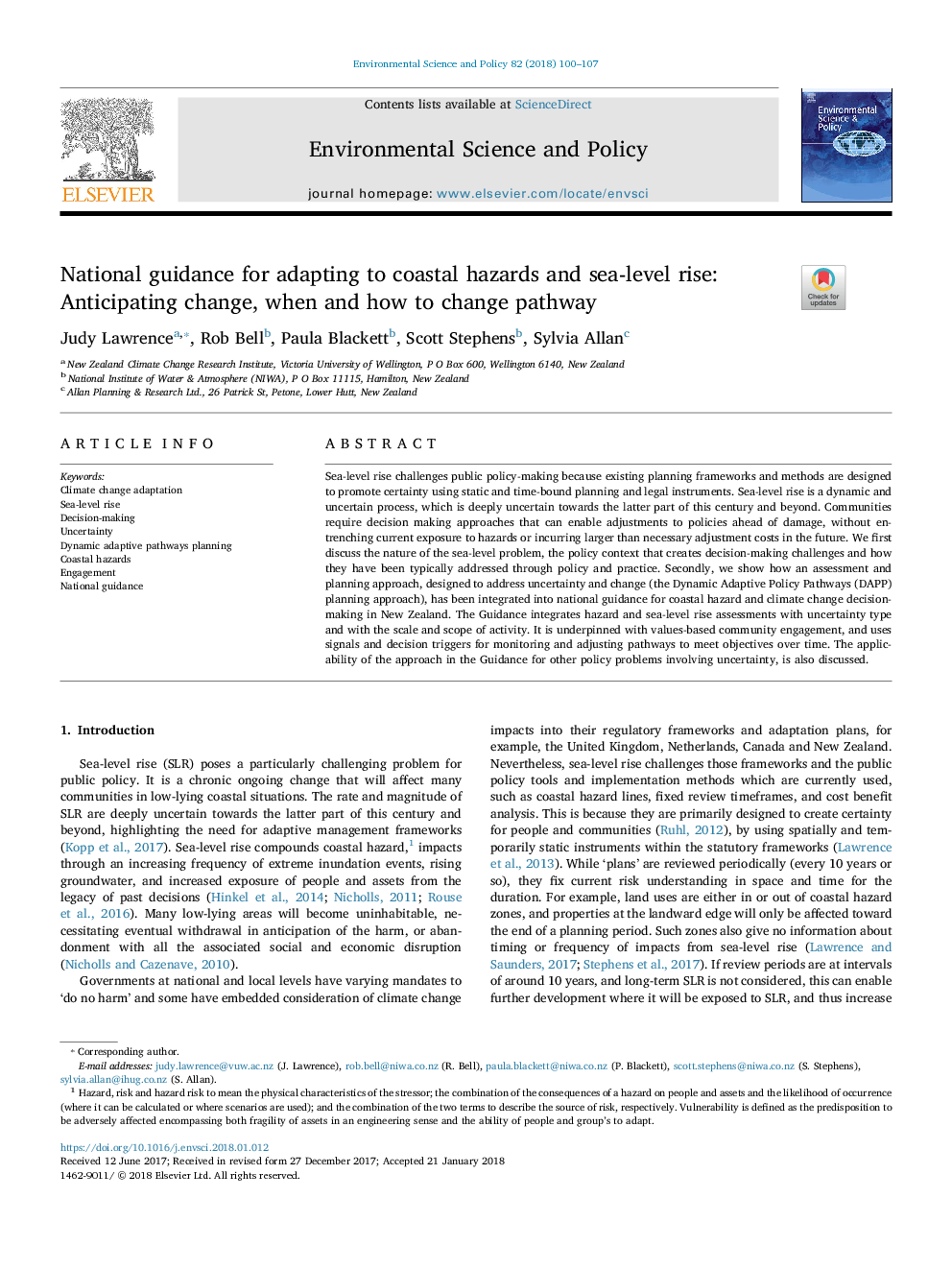ترجمه فارسی عنوان مقاله
راهنمایی های ملی برای تطبیق با خطرات ساحلی و افزایش سطح دریا: پیش بینی تغییر، زمان و چگونگی تغییر مسیر
عنوان انگلیسی
National guidance for adapting to coastal hazards and sea-level rise: Anticipating change, when and how to change pathway
| کد مقاله | سال انتشار | تعداد صفحات مقاله انگلیسی |
|---|---|---|
| 96780 | 2018 | 8 صفحه PDF |
منبع

Publisher : Elsevier - Science Direct (الزویر - ساینس دایرکت)
Journal : Environmental Science & Policy, Volume 82, April 2018, Pages 100-107
ترجمه کلمات کلیدی
سازگاری تغییرات اقلیمی، افزایش سطح آب دریا، تصمیم سازی، عدم قطعیت، برنامه ریزی مسیرهای تطبیقی پویا، خطرات ساحلی، نامزدی، راهنمایی ملی،
کلمات کلیدی انگلیسی
Climate change adaptation; Sea-level rise; Decision-making; Uncertainty; Dynamic adaptive pathways planning; Coastal hazards; Engagement; National guidance;

